If you need a grass for your new lawn that is not too fussy about growing conditions and is resilient to damage, bermuda grass might just be for you! Let’s discuss the best practices for bermuda grass growth.
RELATED: What Are Different Bermuda Grass Types, And Which Is Best For A Lawn?
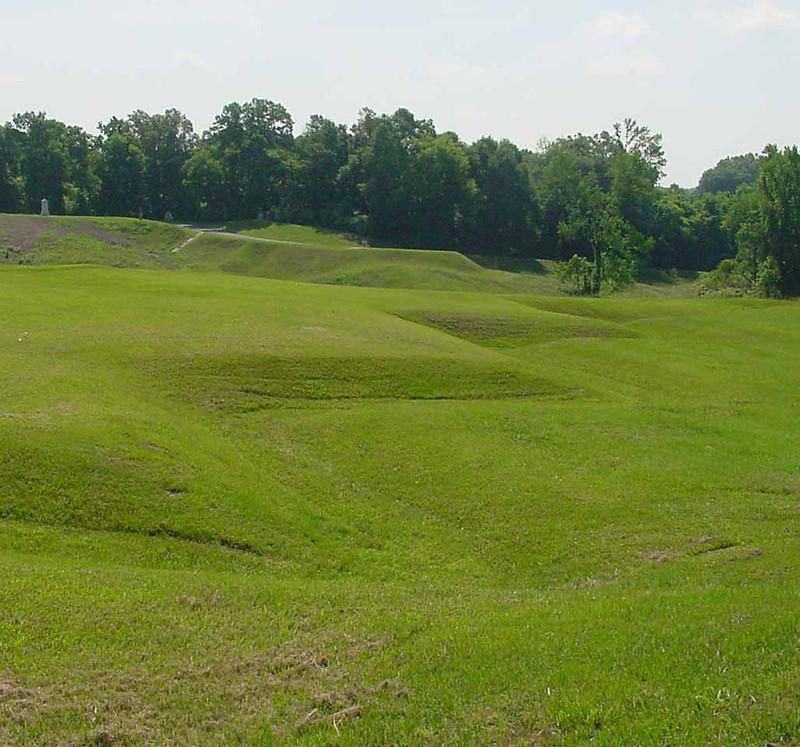
A park planted with bermuda grass
Bermuda grass is well-known for being exceptionally heat resistant and drought tolerant. It is a perennial warm-season grass that best grows in the southern parts of the country. However, it is also used heavily in the transitional zone between northern and southern states. Both warm-season grasses and cool-season grasses grow equally well in the transition zone.
Bermuda grass is often used in golf courses and athletic fields as it grows to form a dense turf. Also, bermuda grass is exceptionally resilient and recovers quickly from damage when compared to other types of grasses. Moreover, it is an actively growing grass which makes it ideal for areas with high foot traffic.
However, despite being highly tolerant, bermuda grass has a mixed reputation. It forms an extensive root system and crowds out other vegetation in the area. It is now even considered among weeds in some regions because of its invasive nature.
So, depending on where you live and what your requirements are, a bermuda grass lawn might be an excellent choice. Let’s learn some more about bermuda grass so you can make the right choice for yourself!
A Quick Look at Bermuda Grass
| Scientific name | Cynodon dactylon |
| Other names | Wire grass, scutch grass, devil’s grass, couch grass, Bahama grass, dog’s tooth grass, dubo, ethana grass, dhoob, crab grass, south grass |
| Optimal growth temperature | – Bermuda grass begins growing at around 15 °C (59 °F)- Maximum growth takes place between 24 and 37 °C (75 and 99 °F) |
| Distribution | – Native to Europe, Asia, Australia, and Africa- Introduced in the Americas- Invasive in Bermuda |
| Uses | – Extensively used in the Ayurveda system of medicine- Considered essential during the worship of Lord Ganesha in Hinduism- Grass juices are used as an astringent- Extensively used in sports fields |
| Maintenance | – Has high maintenance and nutritional requirements |
Bermuda Grass General Description
Leaf-blades
The leaf blades are short and gray-green in color. Leaf-blades only grow to around 2–15 cm (0.79–5.91 inches) in length and have rough edges.
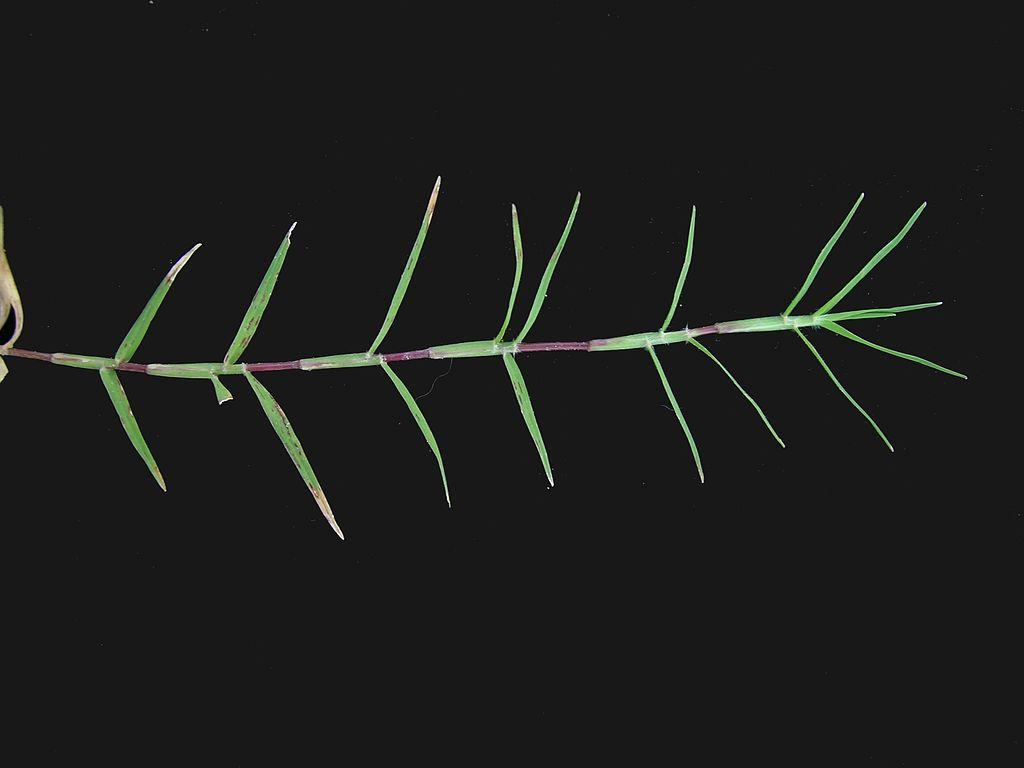
Bermuda grass leaf blades. Note the color of the stem, which is tinted purple in some places.
Stems and Seeds
Stems are flattened, tinted purple, and grow to about 1–30 cm (0.39–11.81 in) in length. Bermuda grass seed heads develop at the top of the stem. Seeds are oval and straw to red in color with an average size of about 1.5 mm.
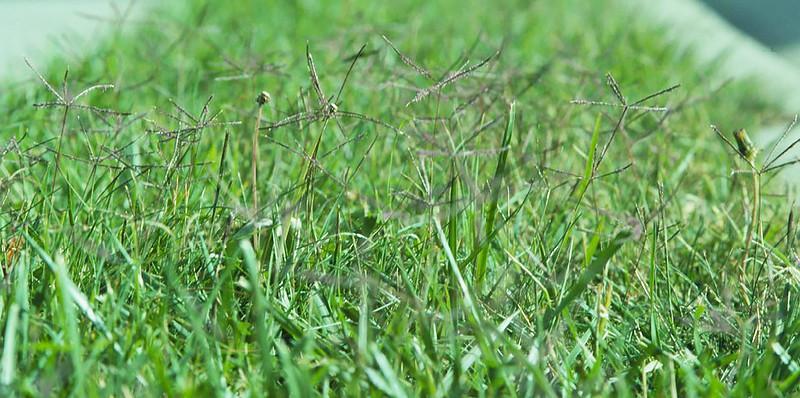
The stems and spikelets of bermuda grass. Note the color of spikelets containing seeds.
Roots
The root system is very extensive, and roots can reach a depth of well over 2 meters (6.6 ft). However, root growth usually depends on several factors, such as soil type and surface. Most roots only reach less than 60 centimeters under the surface.
RELATED: Perennial Ryegrass 101: How To Grow & Care For Perennial Ryegrass?

Bermuda grass can penetrate as much as 2 meters under the soil, making it difficult to kill bermuda grass once and for all.
Where and when does bermuda grass grow best?
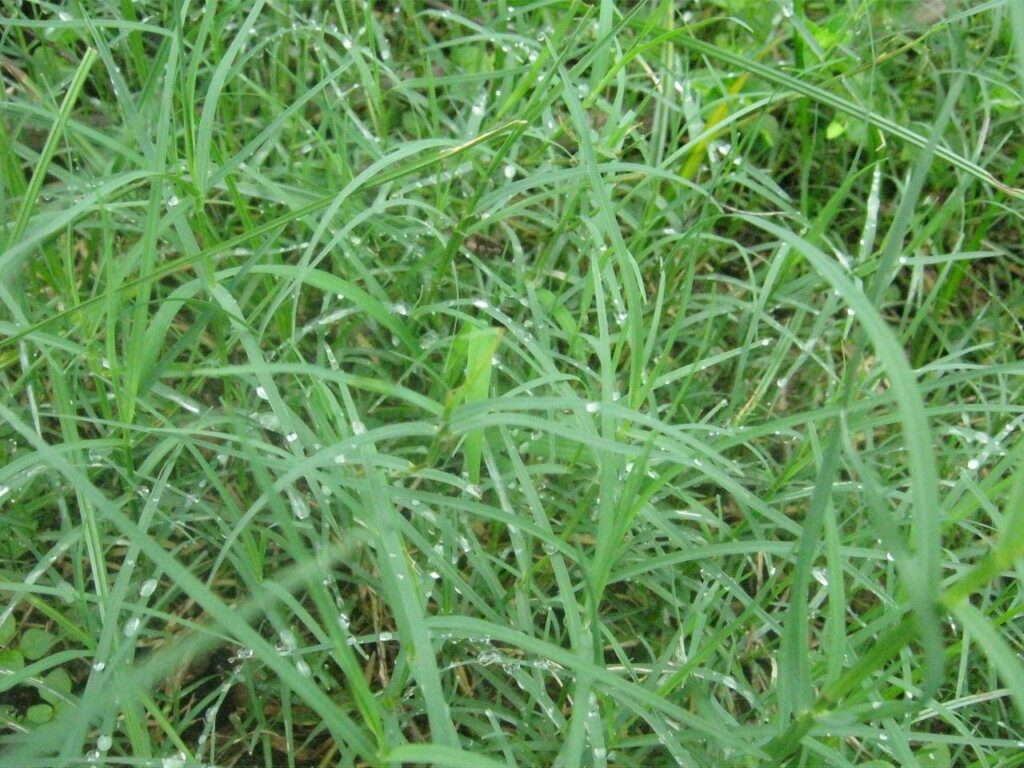
If you love a dense lawn, you cannot go wrong with bermuda grass!
Bermuda grass grows best in slightly acidic soil with a pH of about 6 to 7. However, it can also tolerate moderately alkaline soil as well. If you are looking to grow bermuda grass in your lawn, make sure the lawn soil is well-drained for the bermuda grass to grow normally.
The lack of cold tolerance limits the use of bermuda grass in the northernmost parts of the country. Also, it grows well in full sun and warmer temperatures, restricting its use in southern regions. Bermuda grass grows well in various soils, but sandy soils typically require more frequent watering.
Also, like other warm-season grasses, bermuda grass spreads and grows during late spring and early summer. It goes dormant and turns brown during the early fall and winter months. However, the bermuda lawn might stay green throughout the year in the far south.
How to plant bermuda grass and growth?
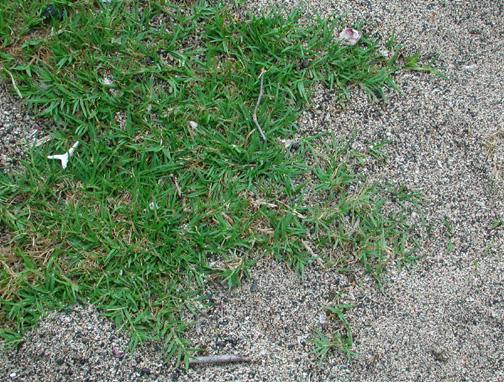
Distribute the bermuda grass seed evenly to avoid a patchy turf
As already mentioned, bermuda grass grows best during late spring and early summer. So, if you are looking to grow it, it is better to do it in these months. The most economical way of planting a bermuda grass lawn is to use commercially available bermuda grass seed. Here is how you can do it easily:
Sowing Bermuda Grass Seeds
- Prepare a large patch by lightly raking the soil. It will loosen up the soil and allow seeds to make good contact with the soil surface.
- Prepare the seeds by mixing them with sand. It helps with the seed spreading process and makes sure that you do not throw too many seeds in one place.
- If the area is small, you can spread seeds by hand, but for larger patches of land, it is best to use a seed spreader to make sure that the seeds are evenly distributed.
- Even though bermuda grass is not too “fussy” about the growing condition, you can and probably should use a commercially available seed starting mix to give the seeds a good head start.
- Cover the seeds with soil equal to three times the seed thickness as a general rule.
- Once the seed sowing process is complete, gently tap down the soil that you used to cover the seeds using a roller or tamper. A good seed-soil contact allows better gas exchange between germinating seed and the environment.
- Ensure the soil surface is not covered as bermuda grass grows best when maximum sunlight hits the soil.
Watering Bermuda Grass
- If you had just sown the seeds, you should water them three to four times daily. Apply 1/8 inch of water each time to keep the soil and seed surface moist.
- Once the seedlings are around half an inch tall, you can reduce the watering frequency further. However, make sure that you supply the grass with 1/4 inch of water each time.
- You will also have to take care that you apply the water with only so much speed that the soil can absorb. Applying the water harshly can cause soil erosion and significant water loss as runoff. It can also rip up the newly germinated seedlings from the ground.
- Once the lawn becomes established, start watering your grass only once or twice a week. However, aim to water one inch or more than that. It will encourage deep rooting and make your lawn is more drought-tolerant.
- The grass will grow well in areas with high rainfall and stay healthy even if you water infrequently. In some areas, once bermuda grass lawn is established, it might not need watering at all.
However, it is always good to take care of the watering needs for your grass to ensure optimal growth. You can assess when the bermuda grass needs to be watered very easily. When the grass takes on a sort of grayish tint and does not instantly bounce back when you move around on it, it is time to water!
RELATED: Planting, Mowing And Watering Bermuda Grass Lawn | How To Do It Right?
Mowing Bermuda Grass
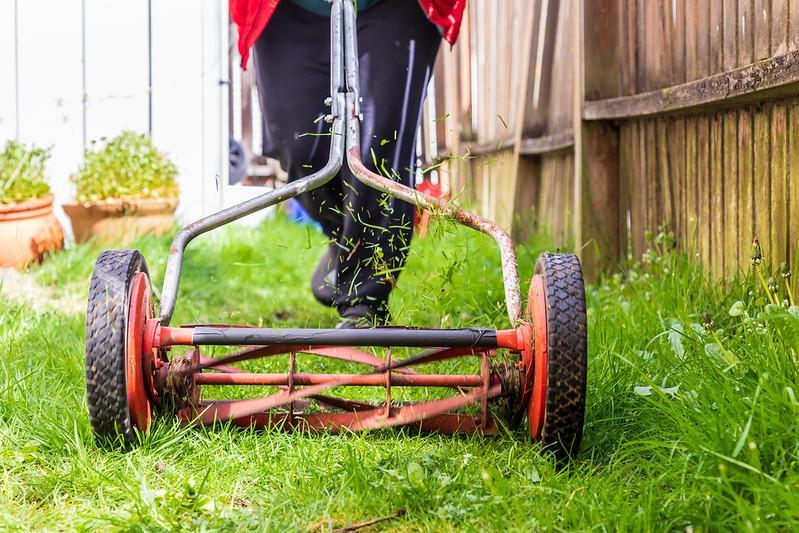
You will have to be always ready for mowing bermuda grass as it grows relatively quickly
As already stated, bermuda grass grows rather quickly. Therefore, during the peak growing season, you might need to mow the grass as often as twice a week. The mowing not only helps to keep your lawn all tidied up, but it will also help the grass spread and toughen up. Here is how you can do it:
- Set the mowing height to around one or two inches. Make sure that you do not remove more than one-third of the leaf area during each mowing session.
- The lower the mowing height you set, the more frequently you will have to mow. However, your bermuda grass lawn will be of much higher quality if you select a lower mowing height.
- You can also leave the grass clipping lying around in the lawn. It is better than bagging them and throwing them away, as bermuda grass clippings decompose quickly. Thus, they can return many essential nutrients to the soil.
Fertilizing Bermuda Grass
In order to choose the best fertilizer for your soil, you should get a soil test that can help you determine which nutrients are lacking in the soil you want to use. You can contact that county extension agent for information on soil testing procedures.
However, if you do not have your soil tested, there is no need to worry. You can use a fertilizer from the local market as well. Begin fertilizing the bermuda grass just after it has turned green. Fertilize it every six to eight weeks during the growing season and stop when the grass enters dormancy during the early fall.
Bermuda Grass Weed Control
If there is anything that can ruin a healthy bermuda grass lawn, it is weeds. It is not uncommon to find both broadleaf and grassy weeds in a bermuda grass lawn. These weeds are particularly a problem during spring. Common weeds that appear in bermuda grass include chickweed, dandelion, and yellow nutgrass.
There are two types of weed control chemicals that you can use to control the growth of weeds in your bermuda grass lawn. You can use either pre-emergent pesticides that control the weeds before they even pop up or use post-emergent pesticides that are useful when weeds have already become a problem.
However, make sure you choose the suitable herbicide and seek an expert opinion. Using a non-specific herbicide, such as glyphosate, can kill almost all the vegetation in your lawn, including the bermuda grass.
Bermuda Grass FAQs
What are the pros and cons of bermuda grass?
Bermuda grass has one of the fastest growth rates when it comes to warm-season perennial grasses. Its rapid growth rate makes it difficult to contain, and you might often see bermuda grass growing into your neighbor’s lawn or creeping along the edges of a sidewalk. In addition, ornamental beds and vegetable gardens adjacent to bermuda lawns are at a high risk of invasion.
However, bermuda grass is not all bad. It can help you achieve your dream of having a lush green lawn. It recovers from damage much more quickly than other grasses. Bermuda grass is also great at out-competing weeds and battling insects and pests. Also, bermuda grass is exceptionally resilient; if a large patch gets damaged, it can rapidly regenerate from the deeply penetrated creeping roots and rhizomes.
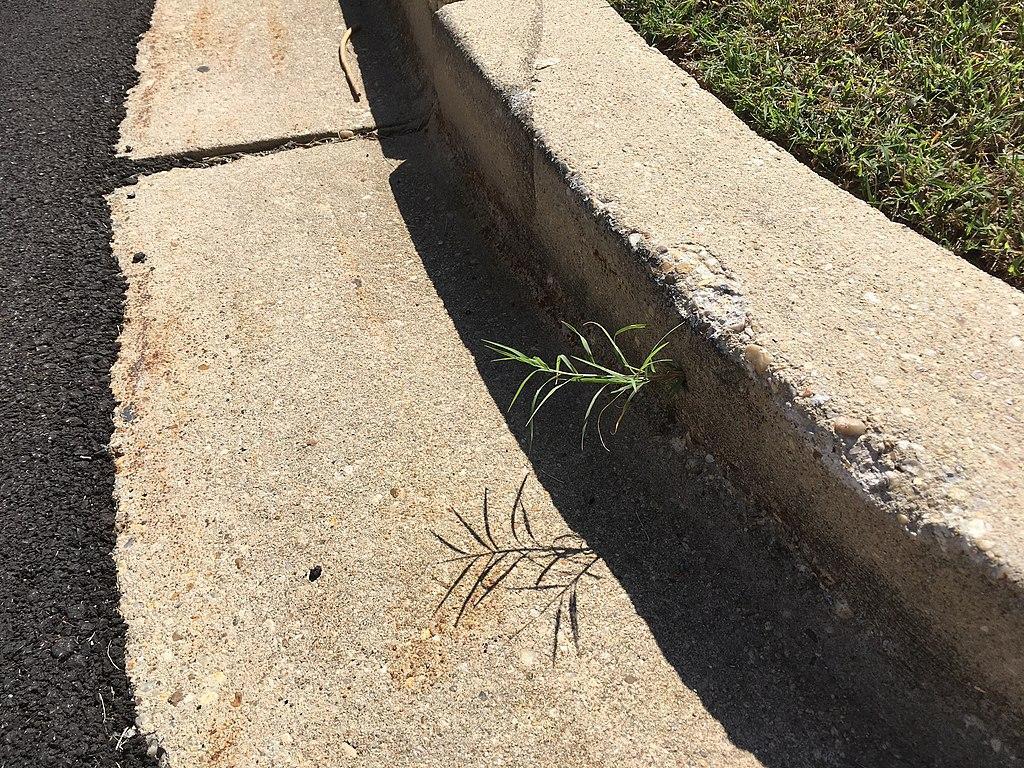
Bermuda grass growing out of a curb
How to get rid of bermuda grass?
The best way to get rid of bermuda grass is to let it choke or to use a selective herbicide. However, using a chemical to get rid of bermuda grass is not the best idea. The chemicals can interfere with the normal growth of other vegetation types in your garden or other wanted grass varieties in the lawn.
You can also try digging up bermuda grass if it is limited to a small area and you have no other options. However, you must be through as bermuda grass does not just have roots underground. It also has rhizomes that are specific horizontal underground stems capable of producing roots and shoots for a new plant system.
Is bermuda grass easy to maintain?
Compared to other grass types, bermuda grass is easier to take care of. It is not too picky about the soil pH, salinity, and quality. It grows equally well in both clay soils and sandy soils. Turf attention a few days a year and some daily light watering are all you need to grow a thick, dense bermuda grass lawn.
However, because of its invasive nature and aggressive growth rate, you will have to put quite a few hours of good work into the lawn, if you want to maintain an all tidied-up bermuda grass lawn. You will need to mow it continuously during the peak growing season and provide it with fertilizer from time to time. Also, keep an eye out for any unwanted weeds in your bermuda grass lawn.
Sources for Further Reading
- Hale, T., Burgess, C., & Forrester, G. (1999). Bermudagrass Yearly Maintenance Program. Retrieved 30 March 2022, from https://hgic.clemson.edu/factsheet/bermudagrass-maintenance-calendar/
- Bermuda grass | University of Maryland Extension. (2022). Retrieved 30 March 2022, from https://extension.umd.edu/resource/bermudagrass
- Bermudagrass Management Guidelines–UC IPM. (2022). Retrieved 30 March 2022, from http://ipm.ucanr.edu/PMG/PESTNOTES/pn7453.html
Now that you learned about Bermuda grass growth, make sure to read our other articles:
How To Sterilize Soil Quickly And Easily | A Comprehensive Guide
How Long Do Grass Seeds Stay Viable? Does It Expire Or Go Bad?







